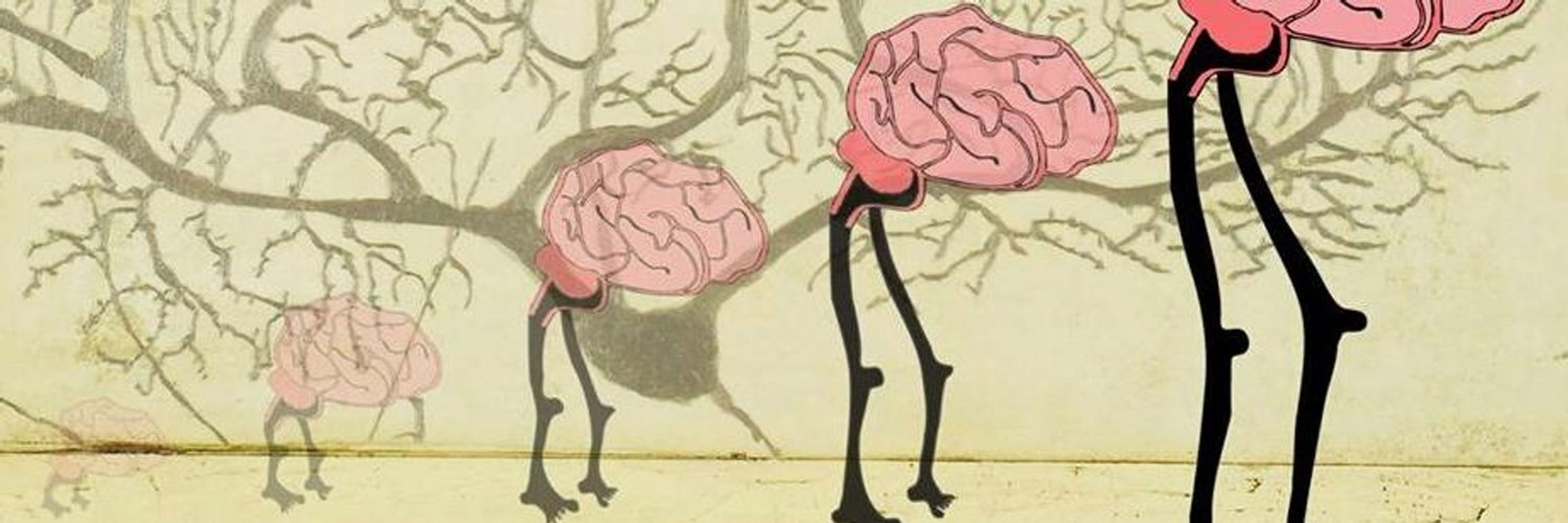
For events & opportunities in brain evolution research follow @EurNetBrainEvoR.bsky.social
http://brainevolutionnews.blogspot.com

What’s it for?
The latest issue of @royalsociety.org Philosophical Transactions B has a series of papers from very smart people on this topic, covering all kinds of creatures 🧠🧪🤔
royalsocietypublishing.org/toc/rstb/202...

What’s it for?
The latest issue of @royalsociety.org Philosophical Transactions B has a series of papers from very smart people on this topic, covering all kinds of creatures 🧠🧪🤔
royalsocietypublishing.org/toc/rstb/202...
link.springer.com/epdf/10.1007...
#neuroskyence #neuroethology 🧠🧪
link.springer.com/epdf/10.1007...
#neuroskyence #neuroethology 🧠🧪
Fin

Fin

link.springer.com/article/10.1...
#neuroskyence #neuroethology #anatomy

link.springer.com/article/10.1...
#neuroskyence #neuroethology #anatomy
10. Applegate MC, Gutnichenko KS, Mackevicius EL & Aronov D 2023, Curr Biol 33(12):2465–2477e2467, doi.org/10.1016/j.cu...
10. Applegate MC, Gutnichenko KS, Mackevicius EL & Aronov D 2023, Curr Biol 33(12):2465–2477e2467, doi.org/10.1016/j.cu...
8. Rook N, Stacho M, Schwarz A, Bingman VP & Güntürkün O 2023, J Comp Neurol 531(7):790–813, doi.org/10.1002/cne....
8. Rook N, Stacho M, Schwarz A, Bingman VP & Güntürkün O 2023, J Comp Neurol 531(7):790–813, doi.org/10.1002/cne....
5. Rehkämper G, Frahm HD & Cnotka J 2008, Brain Behav Evol 71(2):115–126, doi.org/10.1159/0001...
6. Ebinger P & Löhmer R 1984, Z Zool Syst Evolut-forsch 22:136–145.
5. Rehkämper G, Frahm HD & Cnotka J 2008, Brain Behav Evol 71(2):115–126, doi.org/10.1159/0001...
6. Ebinger P & Löhmer R 1984, Z Zool Syst Evolut-forsch 22:136–145.
1. Wallraff HG 2005, Avian navigation: pigeon homing as a paradigm, Springer, Berlin Heidelberg.
2. Bingman VP 2018, J Exp Biol 221:jeb163089, doi.org/10.1242/jeb....
3. Herold C, Coppola VJ & Bingman VP 2015, Hippocampus 25(11):1193–1211, doi.org/10.1002/hipo...
1. Wallraff HG 2005, Avian navigation: pigeon homing as a paradigm, Springer, Berlin Heidelberg.
2. Bingman VP 2018, J Exp Biol 221:jeb163089, doi.org/10.1242/jeb....
3. Herold C, Coppola VJ & Bingman VP 2015, Hippocampus 25(11):1193–1211, doi.org/10.1002/hipo...
This may reflect denser packing and subtle adaptations in spatial cognition—but evidence remains preliminary.
This may reflect denser packing and subtle adaptations in spatial cognition—but evidence remains preliminary.
👉 Further studies—especially those combining behavioural testing, anatomy and physiology, as in songbirds—are needed to test this hypothesis.
👉 Further studies—especially those combining behavioural testing, anatomy and physiology, as in songbirds—are needed to test this hypothesis.
They focused on the dorsolateral (DL) and dorsomedial (DM) parts of the HF.
They focused on the dorsolateral (DL) and dorsomedial (DM) parts of the HF.
Homing pigeons, long used in racing and message delivery, have far greater demands on spatial memory and navigation than feral pigeons, with the hippocampal formation (HF) being crucial to this process 1-3.
Homing pigeons, long used in racing and message delivery, have far greater demands on spatial memory and navigation than feral pigeons, with the hippocampal formation (HF) being crucial to this process 1-3.
Read below 👇
DOI: doi.org/10.1007/s004...
#Neuroscience #BrainEvolution #EvoDevo #Hippocampus #Brain #Neuroanatomy #AvianBrain

Read below 👇
DOI: doi.org/10.1007/s004...
#Neuroscience #BrainEvolution #EvoDevo #Hippocampus #Brain #Neuroanatomy #AvianBrain
5. Giliberti A et al. 2020, Eur J Med Genet 63:103627, doi.org/10.1016/j.ej...
5. Giliberti A et al. 2020, Eur J Med Genet 63:103627, doi.org/10.1016/j.ej...
1. Agoston Z et al. 2012, BMC Dev Biol 12:10, doi.org/10.1186/1471...
2. Agoston Z et al. 2014, Development 141:28–38, doi.org/10.1242/dev....
3. Choe SK et al. 2009, Dev Cell 17:561–567, doi.org/10.1016/j.de...
1. Agoston Z et al. 2012, BMC Dev Biol 12:10, doi.org/10.1186/1471...
2. Agoston Z et al. 2014, Development 141:28–38, doi.org/10.1242/dev....
3. Choe SK et al. 2009, Dev Cell 17:561–567, doi.org/10.1016/j.de...
👉 Xenopus, as an anamniote tetrapod, bridges zebrafish and amniotes, letting us explore how neuronal specification is conserved or diversified across vertebrates.
👉 Xenopus, as an anamniote tetrapod, bridges zebrafish and amniotes, letting us explore how neuronal specification is conserved or diversified across vertebrates.

